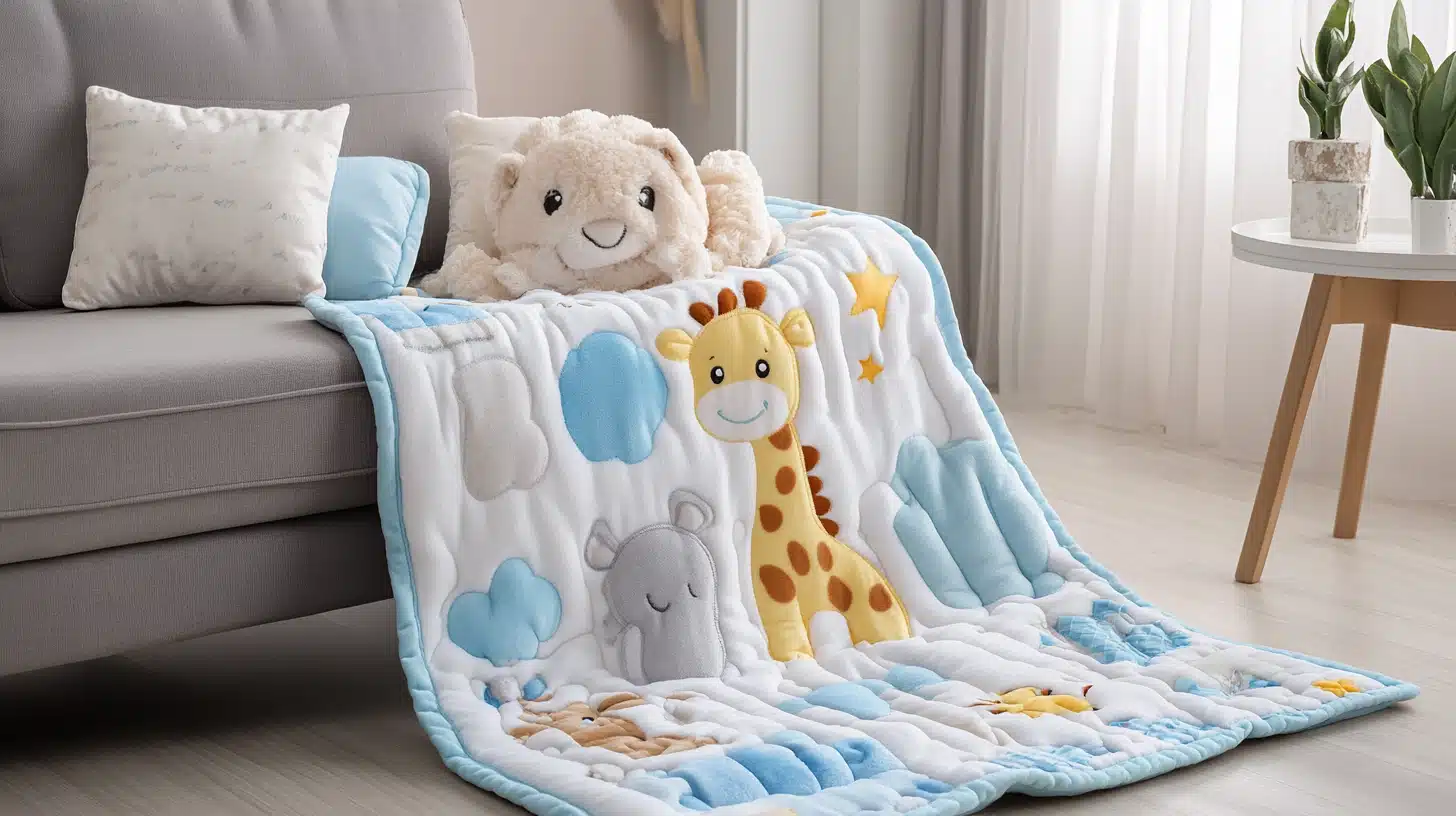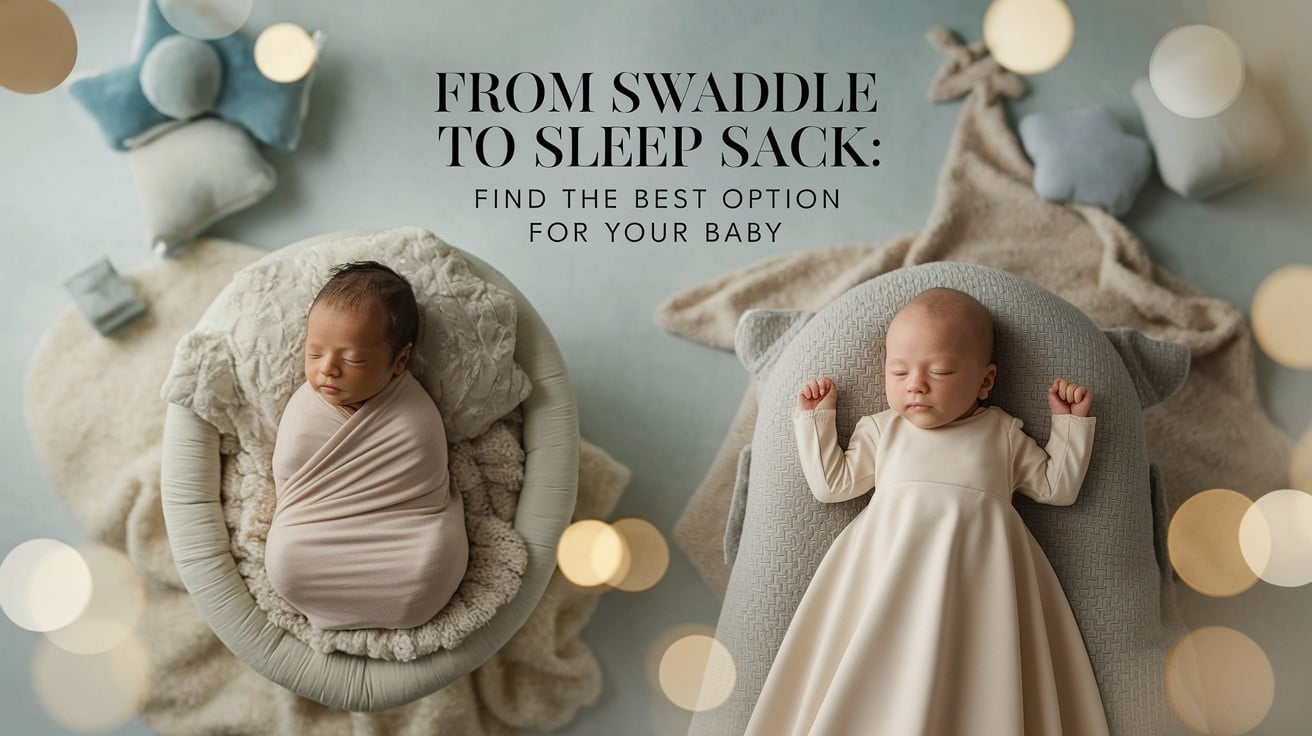
Have you ever wrapped your baby in a blanket only to find it kicked off and bunched in a corner of the crib by morning? Enter the sleep sack, a wearable blanket that’s revolutionizing how babies sleep safely.
These ingenious garments eliminate the suffocation risks of loose bedding while keeping your little one cozy all night long.
While 93% of pediatricians recommend sleep sacks as the safest sleep solution after swaddling, many parents remain confused about when to start using them, which type to choose, and when to transition away.
From TOG (Thermal Overall Grade) ratings to fabric choices, finding the perfect sleep sack doesn’t have to be complicated—and it might just be the secret to those elusive full nights of sleep you’ve been dreaming about.
What Is a Sleep Sack?
A sleep sack is a wearable blanket made just for babies. It’s like a sleeping bag with armholes and a zipper, designed to keep your little one warm while still allowing them to move their arms and legs freely. But wait—don’t mix these with weighted sleep sacks!
TheAmerican Academy of Pediatrics (AAP)strongly warns against using weighted sleep products for babies, as they can be dangerous.
Picture this: Your baby snug as a bug, arms free to stretch, but their body warmly wrapped in a soft cocoon that can’t ride up over their face like a loose blanket could.
Why Use a Sleep Sack?
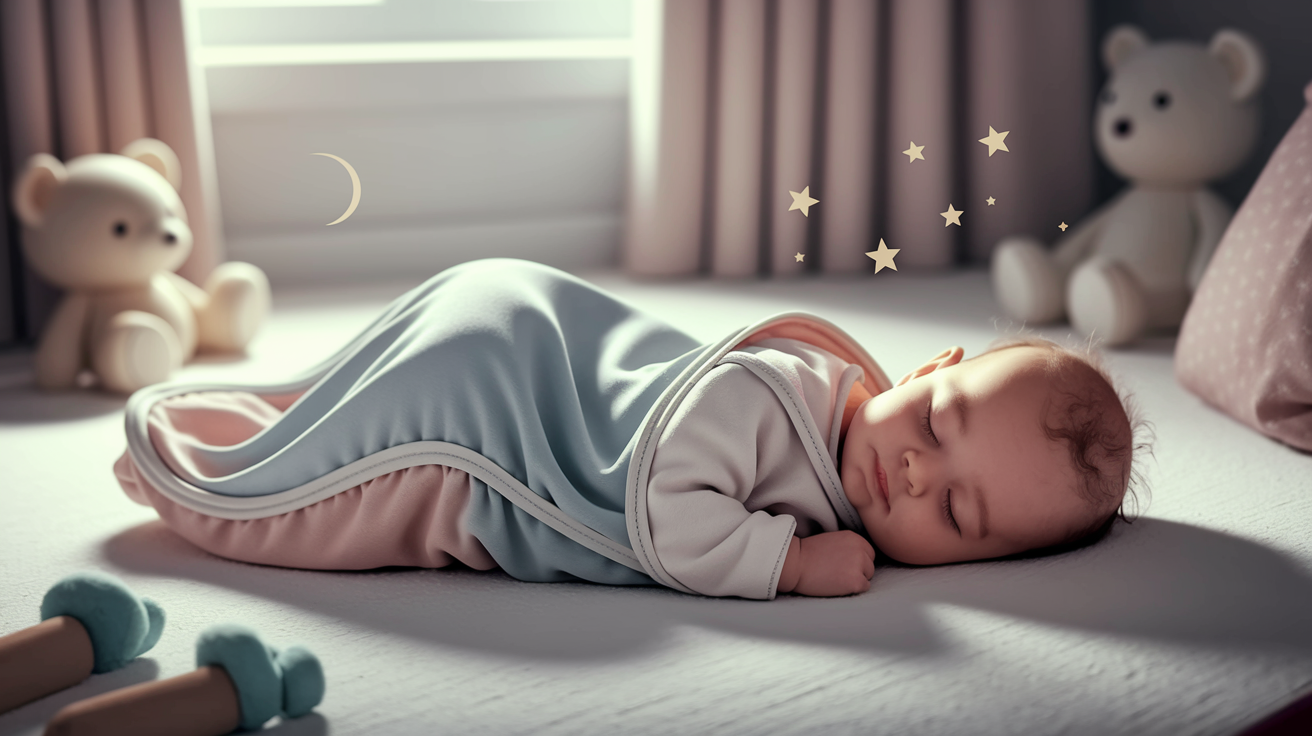
Safety First!
The biggest reason parents love sleep sacks? Safety! Unlike loose blankets that could cover a baby’s face and cause suffocation, sleep sacks stay put. Your baby gets warmth without the worry.
Cozy and Secure
Remember how your baby loved being swaddled as a newborn? Sleep sacks give a similar feeling of security but work even after your baby can roll over. Many babies sleep better with this gentle, hug-like feeling around their bodies.
Just the Right Temperature
Have you ever heard of TOG ratings? This stands for Thermal Overall Guide and tells you how warm a sleep sack is. It’s like choosing the right jacket for the weather—there are lightweight ones for summer and thicker ones for winter.
PRO TIP 1: Check your baby’s neck, not their hands, to see if they’re too hot or cold in their sleep sack. Hands are often cooler, but the neck should feel warm (not sweaty or cool) if they’re at a good temperature.
When to Start and Stop Using Sleep Sacks?

Starting the Sleep Sack Trip
Most babies are ready for sleep sacks when they start showing signs of rolling over, usually between 12 and 16 weeks old. This is when swaddling becomes unsafe, and a sleep sack offers a perfect next step.
Did you know? Some brands make “transitional” sleep sacks that let you swaddle just the arms while keeping the body in a sleep sack design!
Knowing When It’s Time to Stop
There’s no rush to stop using sleep sacks! Many toddlers use them well into their second year. But watch for these signs that it might be time to move on:
- Your child tries to climb out of the crib while wearing it
- They clearly dislike wearing it and fight putting it on
- They’ve moved to a toddler bed and can safely use a small blanket
Listen to Your Child
Every baby is different! Some love the security of a sleep sack longer than others. Instead of following strict age guidelines, pay attention to what works for your unique little one.
Finding the Right Size and Warmth
Sizing by Age
| AGE RANGE | SLEEP SACK FIT RECOMMENDATION |
|---|---|
| 0–6 Months | Look for a snug fit around the neck and armholes without restricting movement. |
| 6–12 Months | Choose roomier designs that allow for kicking and wiggling. |
| 12–24 Months | Consider sleep sacks with foot openings for babies learning to stand. |
Surprise fact: Did you know that some brands now make sleep sacks for children up to 5 years old? These can be helpful for kids who kick off blankets all night!
TOG Ratings Simplified
Think of TOG ratings like this:
| TOG RATING | WARMTH LEVEL | RECOMMENDED ROOM TEMPERATURE |
|---|---|---|
| 0.5 TOG | Like a thin sheet | 75–80°F (warm rooms) |
| 1.0 TOG | Like a light blanket | 70–75°F |
| 2.5 TOG | Like a warm comforter | 65–70°F (cooler rooms) |
PRO TIP #2: Dress your baby in layers under the sleep sack based on the room temperature. For a 1.0 TOG sleep sack in a 72°F room, a long-sleeve onesie is usually perfect.
What Makes a Good Sleep Sack?
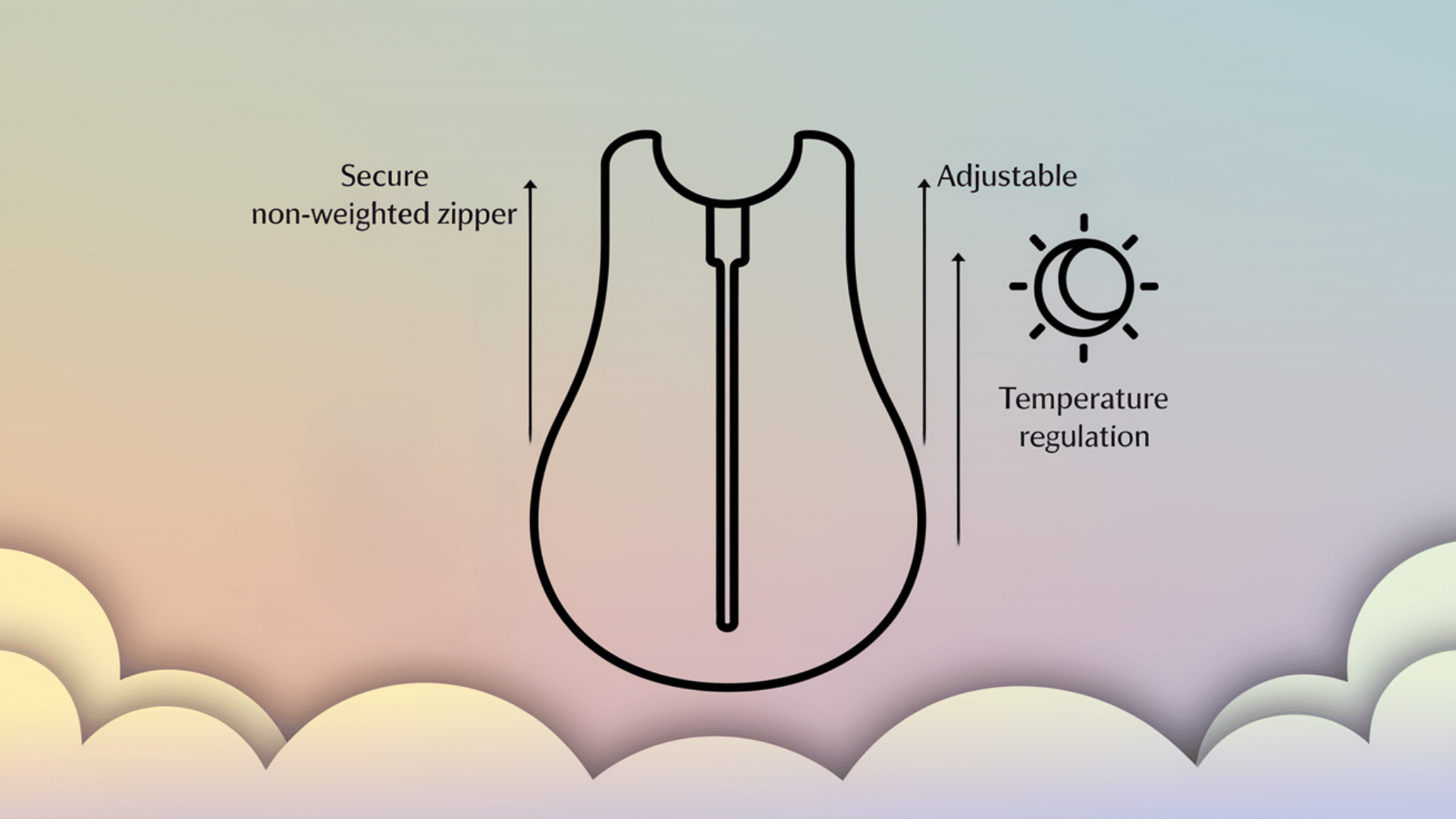
1. Fabrics That Feel Good
The best sleep sacks are made from natural, breathable materials:
- Bamboo viscose: Super soft and great for babies with sensitive skin
- Cotton: Durable and easy to clean
- Cloud blend: Ultra-soft mix of fabrics for maximum comfort
- Rayon: Silky smooth and cool to the touch
2. Smart Design Features
Look for these helpful features when shopping:
- Two-way zippers for easy diaper changes
- Zipper covers to protect fragile skin
- Hip-friendly designs that allow for natural leg position
- Shoulder snaps for easy dressing
3. Made to Last
Sleep sacks get a lot of use (and washing!). Good ones should:
- Hold up after many washes without pilling
- Keep their shape and softness
- Strong seams and zippers that don’t break
Brand Breakdown: Which Sleep Sack Is Best?
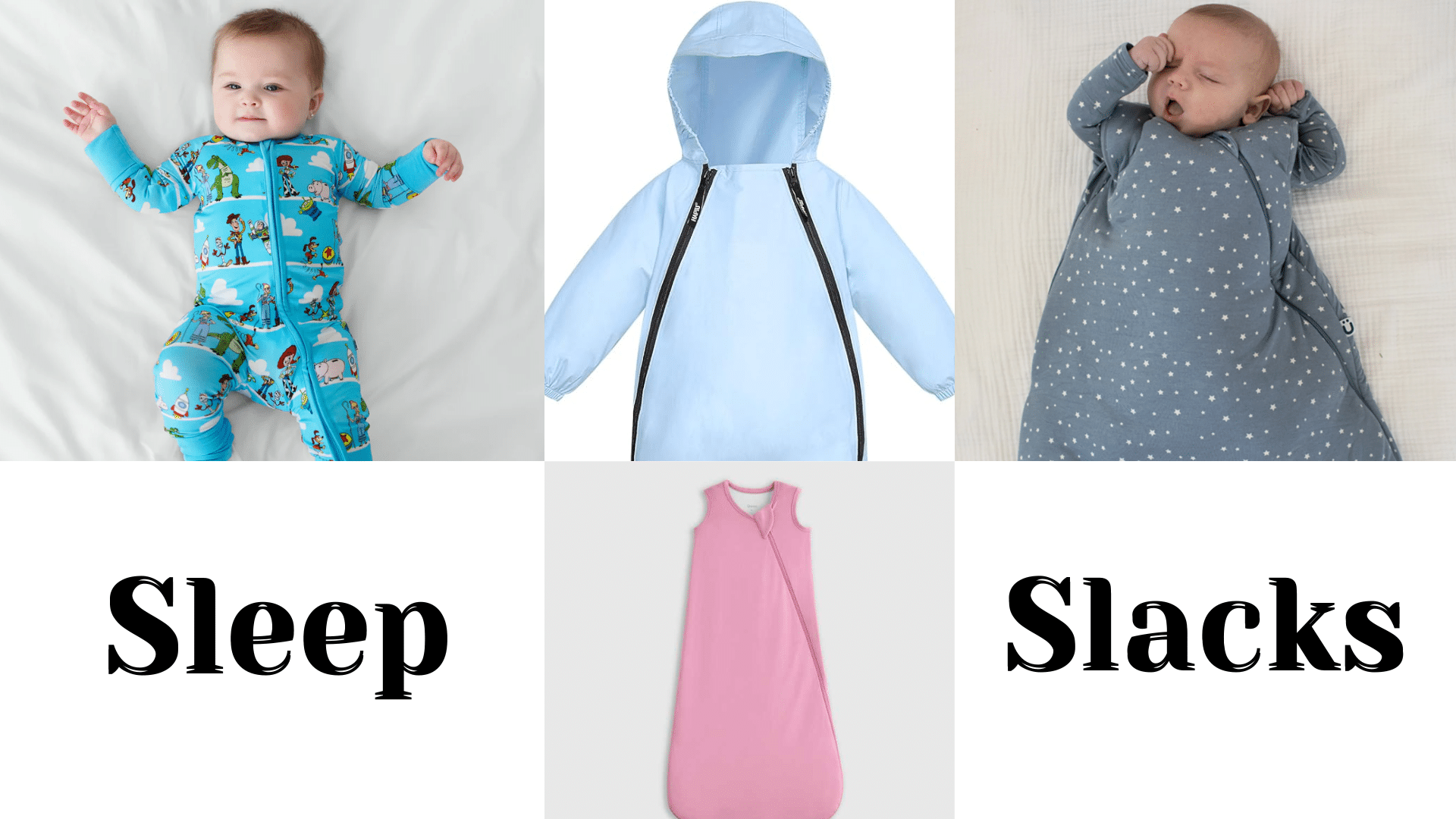
Let’s be real – there are tons of sleep sack brands out there! Here’s the scoop on seven popular options:
Here are your rephrased sleep sack brand descriptions, each kept to about 80 words:
1. HALO
Offering an attractive balance of affordability and consistent quality, HALO sleep sacks feature standardized sizing that makes shopping straightforward for parents.
Their accessible price point doesn’t compromise on essential safety features or comfort.
2. QUINCE
Quince distinguishes itself with exceptional bamboo fabric that feels luxuriously soft against baby’s skin while maintaining breathability.
Their range includes multiple thermal ratings (TOG options) to accommodate various room temperatures and seasons at prices that outperform comparable premium brands.
3. Amazon HAPIU
These wallet-friendly sleep sacks deliver surprising quality that exceeds expectations at their price point.
The fabric maintains its softness even after numerous wash cycles, resisting pilling and maintaining structural integrity. Parents appreciate the straightforward design and reliable performance without premium markup.
4. GUNAMUNA
Gunamuna sleep sacks feature exceptionally plush, premium materials that maintain their integrity through countless washes.
Their thoughtfully generous cut provides ample room for kicking and movement while accommodating growth spurts, significantly extending usable lifespan beyond competitors’.
The brand’s meticulous attention to detail includes reinforced stitching and premium zippers.
5. LITTLE SLEEPIES
Little Sleepies offers innovative adjustability through strategic underarm snap placements that adapt to your growing baby.
Their delightful, whimsical pattern collection provides style-conscious parents with Instagram-worthy sleep options featuring seasonal themes and limited-edition designs.
Extra Tips for Sleep Sack Success
Safety Always Comes First
Remember: the AAP advises against weighted sleep sacks or any weighted sleepwear for babies. For safety, stick with regular, non-weighted options.
Making the Switch to Blankets
When your toddler is ready to transition from sleep sacks to blankets (usually after age 2), start with a small, lightweight blanket and supervise naps to ensure their safety.
PRO TIP 3: Try using a sleep sack and a very light blanket together for a week or two during the transition. Put the light blanket over the sleep sack, then eventually replace the sleep sack entirely.
Special Situations
For babies with eczema or very sensitive skin, bamboo and cotton sleep sacks without dyes or with minimal seams tend to work best. If your baby runs hot or cold, focus on getting the right TOG rating rather than just following the season.
Ending Note
Sleep sacks bridge the gap between swaddling and blankets, offering a safe sleep solution that grows with your baby from early infancy into toddlerhood.
Starting around 12-16 weeks when rolling begins, these wearable blankets provide security without restricting movement.
With options ranging from lightweight 0.5 TOG for warm rooms to cozy 2.5 TOG for cooler temperatures and fabrics from bamboo to cotton, there’s a perfect match for every baby and season.
The best part? There’s no rush to stop—many children use sleep sacks well into their second year.
By choosing the right size, material, and warmth level, you’re not just creating a safer sleep environment; you’re establishing healthy sleep habits that benefit the whole family.
If you’re interested in more informational content on mothers and babies, feel free to click here and examine other blogs that you might enjoy.

